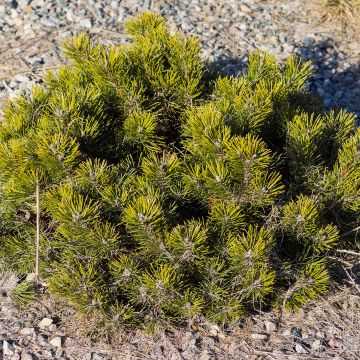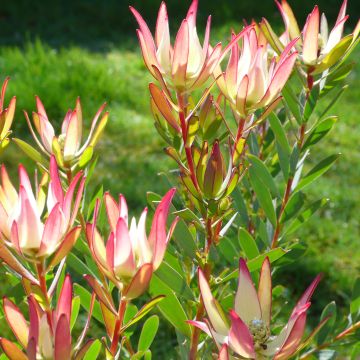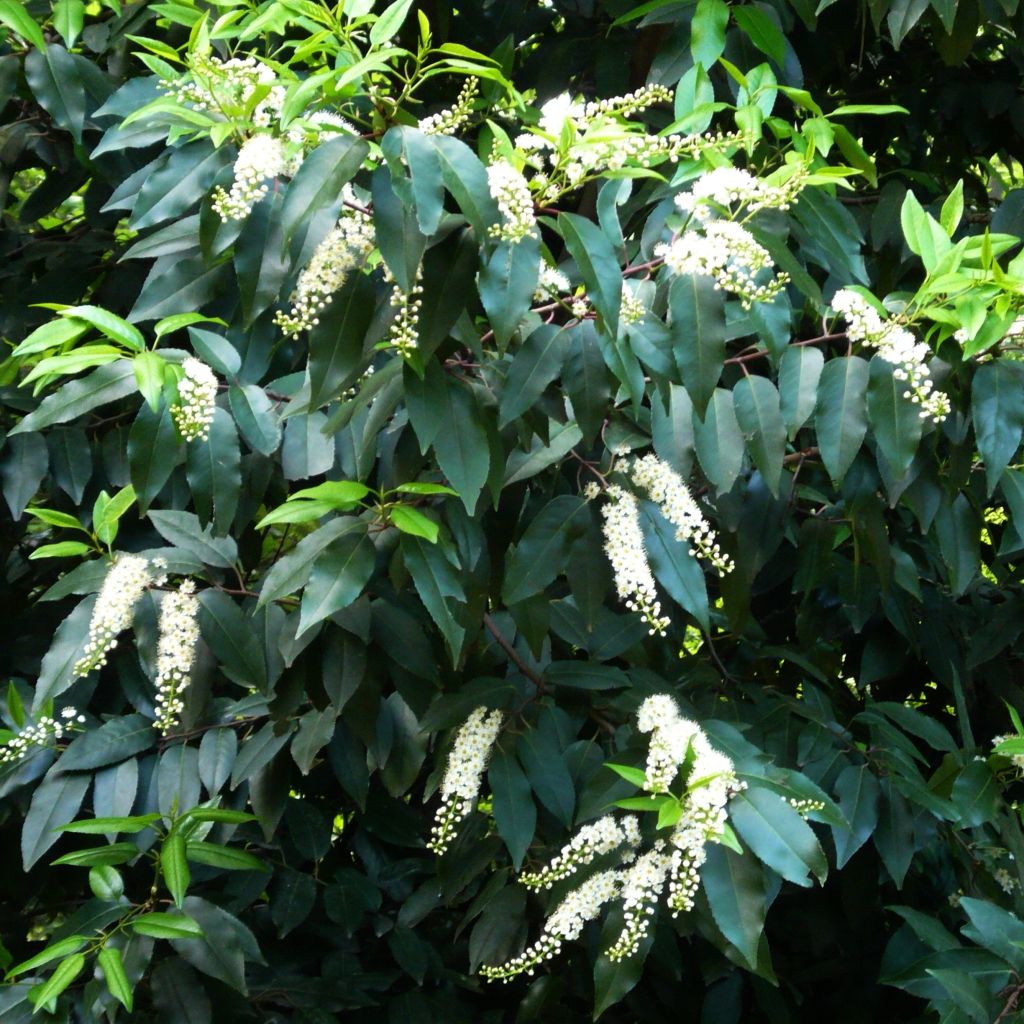

Prunus lusitanica - Portuguese Laurel
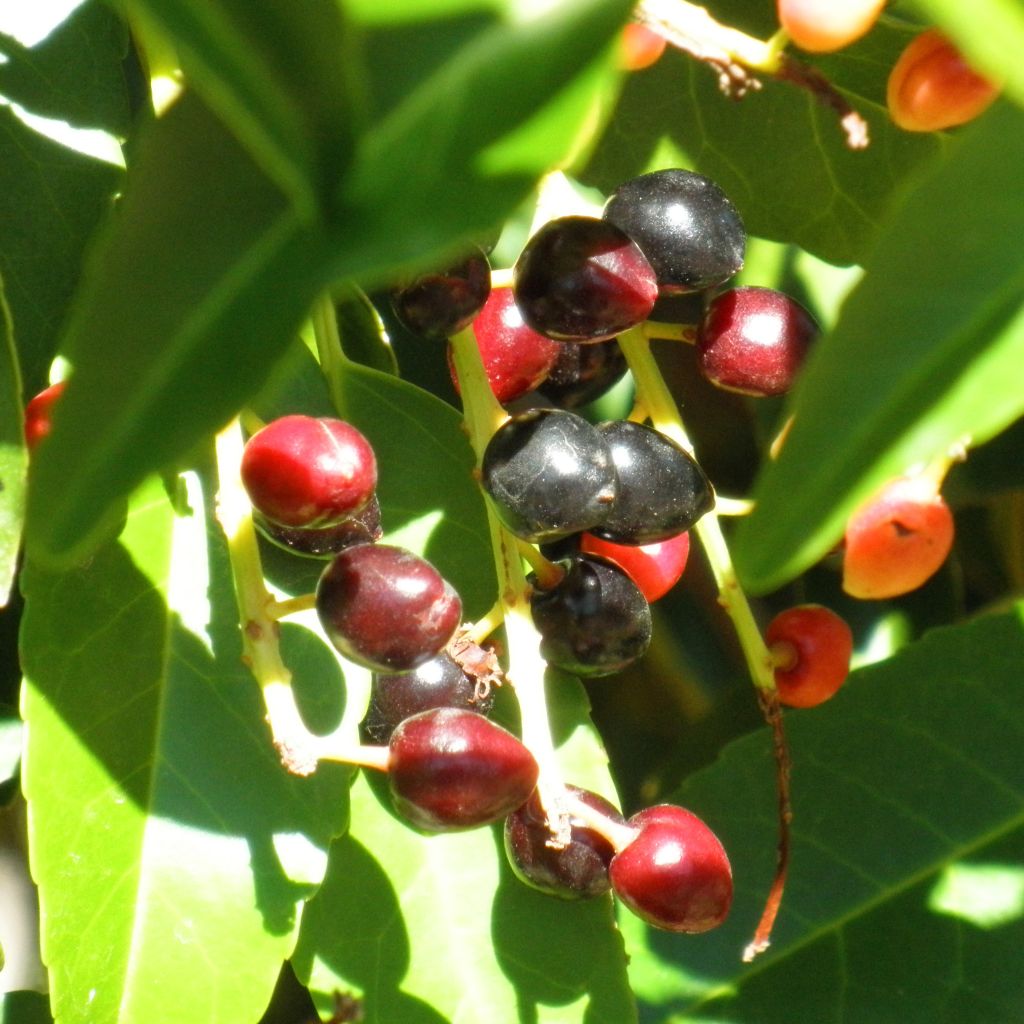

Prunus lusitanica - Portuguese Laurel
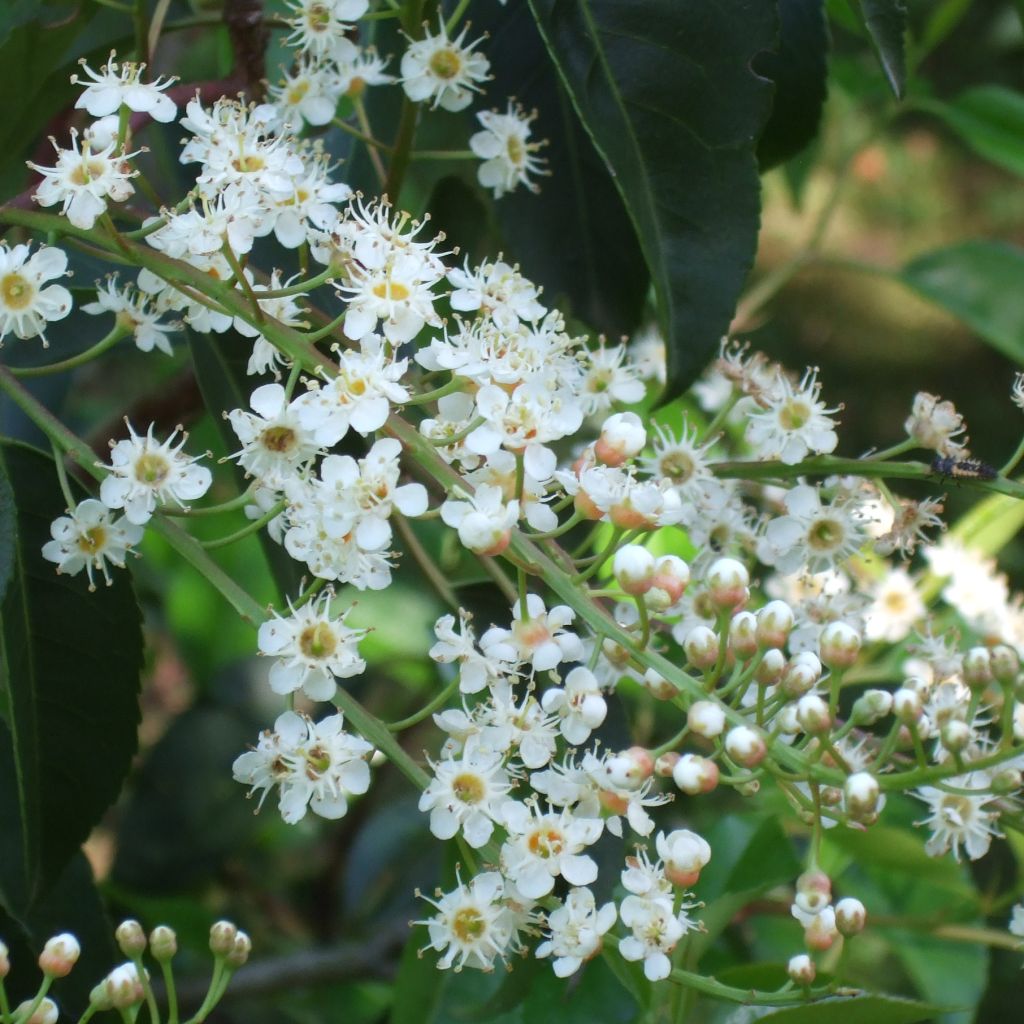

Prunus lusitanica - Portuguese Laurel
Prunus lusitanica - Portuguese Laurel
Prunus lusitanica
Portugal Laurel, Azores Laurel
This item cannot be shipped to the selected country
Delivery charge from €5.90
Delivery charge from €5.90
Delivery to Corse prohibited
More information
Schedule delivery date,
and select date in basket
This plant carries a 24 months recovery warranty
More information
We guarantee the quality of our plants for a full growing cycle, and will replace at our expense any plant that fails to recover under normal climatic and planting conditions.
From €5.90 for pickup delivery and €6.90 for home delivery
Express home delivery from €8.90.
From €5.90 for pickup delivery and €6.90 for home delivery
Express home delivery from €8.90.
Delivery to Corse prohibited: UE law prohibits the import of this plant from mainland France to Corse as part of the fight against Xylella fastidiosa. Please accept our sincere apologies.
More information


Does this plant fit my garden?
Set up your Plantfit profile →
Description
The Portuguese Laurel, in Latin Prunus lusitanica, forms a large bush or a small tree with a conical and dense habit, whose red stems bear beautiful dark green foliage, decorative all year round, even in winter. It also offers, in late spring, the spectacle of its elongated and frothy white flower clusters, whose fragrance attracts pollinating insects. The flowers are followed by red and then black fruits, appreciated by magpies and starlings. The Portuguese laurel is easily cultivated in well-drained, moist to dry, even limestone soil, and is often grown as an informal or pruned hedge, or shaped into topiary. Less hardy than its cousin the cherry laurel, with slower growth, it is also drought-resistant and much more ornamental.
The Portuguese Laurel is a bush belonging to the rose family. It is native to Spain and Portugal, also adapts elsewhere, and even in Mediterranean regions if it has deep soil. Its hardiness is around -15°C (5°F) once well-established in well-drained soil.
Capable of reaching 6-8 metres in height, it shows slow to very slow growth. Its habit is bushy when young, then over the years it takes on the appearance of a small tree. Its young branches are reddish in colour. They bear evergreen leaves, ovate and dentate, 6 to 12cm (4.7in) long, with a shiny dark green colour. In May-June, depending on the climate, it produces white flowers with orange hearts, cup-shaped, 1.5cm (0.4in) in diameter, fragrant, nectar-rich, and attractive to bees, gathered in narrow, pendulous clusters, 12 to 15cm (5.9in) long. The fruits consist of small oval berries, 8mm (0.3in) in size, initially green then turning red, dark purple, and finally black, highly toxic to humans if ingested, but highly appreciated by certain birds such as magpies or starlings.
The Portuguese Laurel requires deep and loose soil. Its hardiness is better in light soils that do not retain excess water in winter. It is often used as a windbreak hedge, pruned or not, in association with Photinia serratifolia or Red Robin, Eleagnus ebbingei, cherry laurel, Cotoneaster lacteus, bay laurel (in mild climates), holm oak, strawberry tree, and Mexican orange. It can also be placed as a standalone specimen and shaped into topiary.
Tip: Do not prune at the beginning of the season to fully enjoy the flowering.
Report an error about the product description
Prunus lusitanica - Portuguese Laurel in pictures
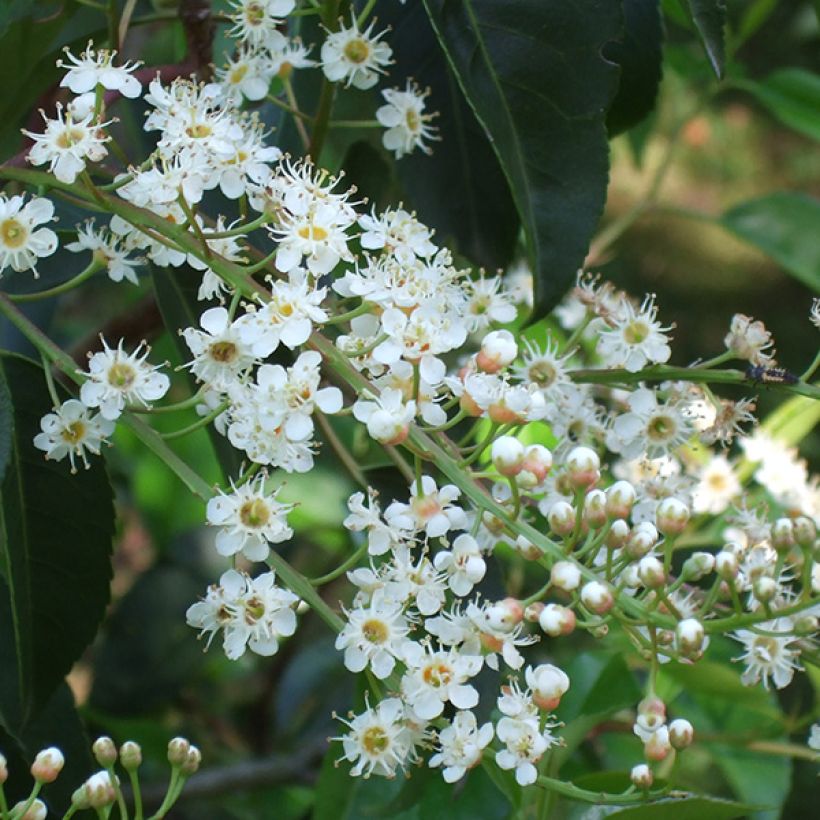

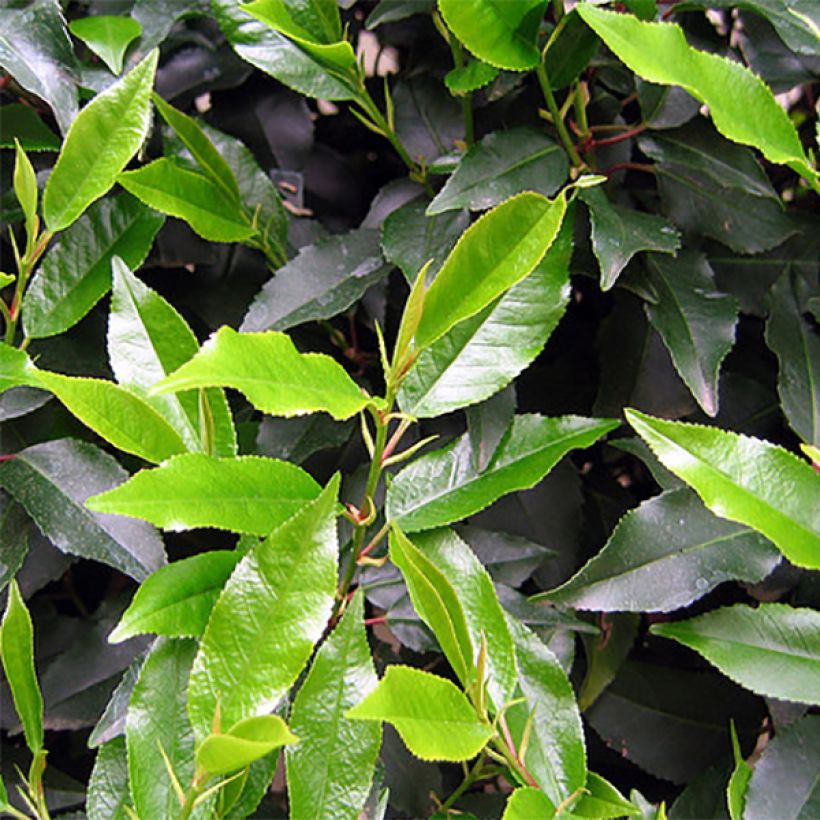

Plant habit
Flowering
Foliage
Botanical data
Prunus
lusitanica
Rosaceae
Portugal Laurel, Azores Laurel
Mediterranean
Other Portuguese laurel
Planting and care
The Prunus lusitanica is best planted from February to May, in any deep, fertile, well-worked and well-drained soil, even slightly chalky, moist to slightly dry in summer, in full sun or partial shade. Allow between 80cm (31.5in) and 1m (3.3ft) distance between each plant to compose a hedge. In cold regions, protect it from cold and strong winds. Prune at the end of winter by cutting back close to the trunk to keep the plant compact, but this may compromise flowering.
It can withstand cold temperatures down to -15°C (5°F) and may be attacked by aphids or scale insects in summer. The otter shrews also nibble on its leaves during the night: encourage the presence of beetles in your garden to naturally combat this insect. To promote the presence of beetles (Carabus auratus), it is recommended to leave grassy strips uncut. The presence of phacelias could also attract this beneficial insect for gardeners.
Planting period
Intended location
Care
-
, onOrder confirmed
Reply from on Promesse de fleurs
Evergreen shrubs
Haven't found what you were looking for?
Hardiness is the lowest winter temperature a plant can endure without suffering serious damage or even dying. However, hardiness is affected by location (a sheltered area, such as a patio), protection (winter cover) and soil type (hardiness is improved by well-drained soil).

Photo Sharing Terms & Conditions
In order to encourage gardeners to interact and share their experiences, Promesse de fleurs offers various media enabling content to be uploaded onto its Site - in particular via the ‘Photo sharing’ module.
The User agrees to refrain from:
- Posting any content that is illegal, prejudicial, insulting, racist, inciteful to hatred, revisionist, contrary to public decency, that infringes on privacy or on the privacy rights of third parties, in particular the publicity rights of persons and goods, intellectual property rights, or the right to privacy.
- Submitting content on behalf of a third party;
- Impersonate the identity of a third party and/or publish any personal information about a third party;
In general, the User undertakes to refrain from any unethical behaviour.
All Content (in particular text, comments, files, images, photos, videos, creative works, etc.), which may be subject to property or intellectual property rights, image or other private rights, shall remain the property of the User, subject to the limited rights granted by the terms of the licence granted by Promesse de fleurs as stated below. Users are at liberty to publish or not to publish such Content on the Site, notably via the ‘Photo Sharing’ facility, and accept that this Content shall be made public and freely accessible, notably on the Internet.
Users further acknowledge, undertake to have ,and guarantee that they hold all necessary rights and permissions to publish such material on the Site, in particular with regard to the legislation in force pertaining to any privacy, property, intellectual property, image, or contractual rights, or rights of any other nature. By publishing such Content on the Site, Users acknowledge accepting full liability as publishers of the Content within the meaning of the law, and grant Promesse de fleurs, free of charge, an inclusive, worldwide licence for the said Content for the entire duration of its publication, including all reproduction, representation, up/downloading, displaying, performing, transmission, and storage rights.
Users also grant permission for their name to be linked to the Content and accept that this link may not always be made available.
By engaging in posting material, Users consent to their Content becoming automatically accessible on the Internet, in particular on other sites and/or blogs and/or web pages of the Promesse de fleurs site, including in particular social pages and the Promesse de fleurs catalogue.
Users may secure the removal of entrusted content free of charge by issuing a simple request via our contact form.
The flowering period indicated on our website applies to countries and regions located in USDA zone 8 (France, the United Kingdom, Ireland, the Netherlands, etc.)
It will vary according to where you live:
- In zones 9 to 10 (Italy, Spain, Greece, etc.), flowering will occur about 2 to 4 weeks earlier.
- In zones 6 to 7 (Germany, Poland, Slovenia, and lower mountainous regions), flowering will be delayed by 2 to 3 weeks.
- In zone 5 (Central Europe, Scandinavia), blooming will be delayed by 3 to 5 weeks.
In temperate climates, pruning of spring-flowering shrubs (forsythia, spireas, etc.) should be done just after flowering.
Pruning of summer-flowering shrubs (Indian Lilac, Perovskia, etc.) can be done in winter or spring.
In cold regions as well as with frost-sensitive plants, avoid pruning too early when severe frosts may still occur.
The planting period indicated on our website applies to countries and regions located in USDA zone 8 (France, United Kingdom, Ireland, Netherlands).
It will vary according to where you live:
- In Mediterranean zones (Marseille, Madrid, Milan, etc.), autumn and winter are the best planting periods.
- In continental zones (Strasbourg, Munich, Vienna, etc.), delay planting by 2 to 3 weeks in spring and bring it forward by 2 to 4 weeks in autumn.
- In mountainous regions (the Alps, Pyrenees, Carpathians, etc.), it is best to plant in late spring (May-June) or late summer (August-September).
The harvesting period indicated on our website applies to countries and regions in USDA zone 8 (France, England, Ireland, the Netherlands).
In colder areas (Scandinavia, Poland, Austria...) fruit and vegetable harvests are likely to be delayed by 3-4 weeks.
In warmer areas (Italy, Spain, Greece, etc.), harvesting will probably take place earlier, depending on weather conditions.
The sowing periods indicated on our website apply to countries and regions within USDA Zone 8 (France, UK, Ireland, Netherlands).
In colder areas (Scandinavia, Poland, Austria...), delay any outdoor sowing by 3-4 weeks, or sow under glass.
In warmer climes (Italy, Spain, Greece, etc.), bring outdoor sowing forward by a few weeks.














































